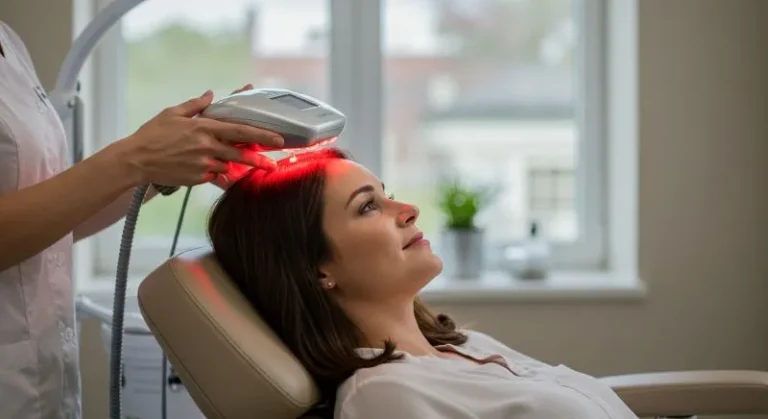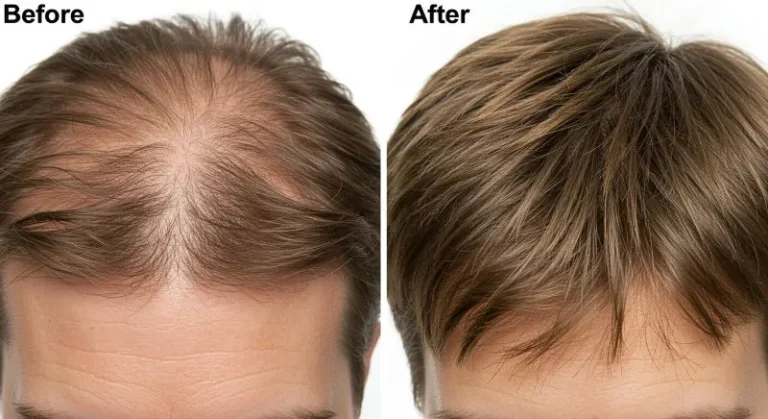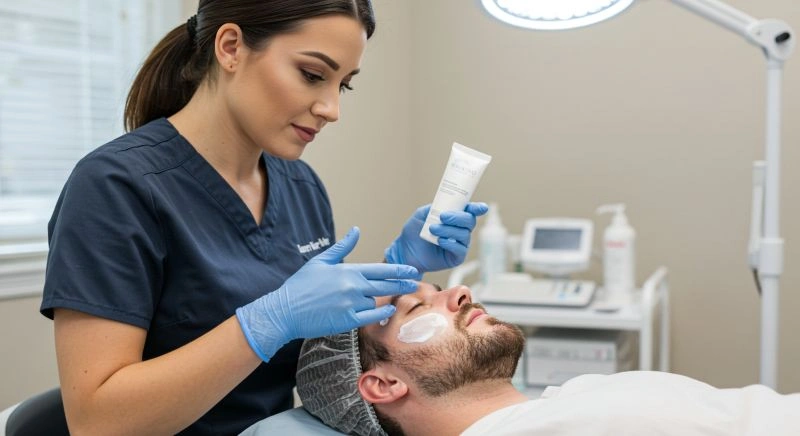Beard restoration has emerged as a popular solution for men seeking to achieve fuller, more defined facial hair. This comprehensive guide will provide you with everything you need to know about these procedures, including how they work, what to expect during treatment, the associated costs, and potential risks, to help you make an informed decision.
Beard restoration is a specialized cosmetic procedure designed to restore or enhance facial hair growth in areas where natural beard development is sparse, patchy, or completely absent. This treatment addresses various concerns, including genetics, scarring, hormonal factors, and medical conditions that prevent normal facial hair growth.
"Beauty is the illumination of your soul."
John O’Donohue
Types of Beard Restoration Treatments
Surgical Beard Restoration
Surgical beard restoration typically involves transplanting hair follicles from donor areas to the facial region where beard growth is desired. This method provides permanent results by relocating healthy hair follicles that will continue to grow naturally in their new location.
The most common surgical technique uses Follicular Unit Extraction (FUE), where individual hair follicles are harvested from the scalp or other body areas and carefully transplanted to create natural-looking beard patterns. This method minimizes scarring and allows for precise placement of grafts.
Another surgical approach involves Follicular Unit Transplantation (FUT), where a strip of hair-bearing skin is removed from the donor area and divided into individual grafts. While this method can be more cost-effective for larger areas, it may leave a linear scar in the donor region.
Non-Surgical Beard Restoration
Non-surgical beard restoration encompasses various treatments designed to stimulate existing hair follicles and promote natural beard growth, eliminating the need for invasive procedures. These options are suitable for men with some existing facial hair who want to enhance density and coverage.
Platelet-Rich Plasma (PRP) therapy involves injecting concentrated platelets from the patient’s own blood into the beard area to stimulate follicle activity and promote hair growth. This treatment typically requires multiple sessions and shows gradual improvement over several months.
Topical medications, such as minoxidil, can help stimulate beard growth in some men, particularly those with mild thinning or patchy areas. Micro-needling treatments combined with growth factors may also promote follicle health and hair production in the facial area.
How Beard Restoration Works
The Procedure Step-by-Step
The beard restoration procedure begins with comprehensive coa nsultation and planning to design the ideal beard shape and density for each patienttailored tofacial structure and preferences. The surgeon maps out the trethen atment area and determines the number of grafts needed for optimal resuto achieve.
On the day of surgery, the treatment area is cleaned and prepared, followed by local anesthesia administration to ensure patient comfort throughout the procedure. For surgical restoration, hair follicles are carefully extracted from donor areas using specialized instruments that preserve follicle integrity.
The extracted follicles are prepared and sorted while the surgeon creates recipient sites in the beard area. Each graft is then meticulously placed to follow natural beard growth patterns, ensuring proper angle, direction, and density distribution for the most natural-looking results.
Pain and Comfort During the Procedure
Modern procedures are generally well-tolerated, with effective pain management techniques in place. Local anesthesia effectively numbs both the donor and recipient areas, making the procedure comfortable for most patients.
During follicle extraction and placement, patients typically experience minimal discomfort, often described as slight pressure or mild stinging sensations. The surgical team monitors comfort levels throughout the procedure and can provide additional anesthesia if needed.
Most patients find the procedure more comfortable than anticipated, with many able to watch movies, listen to music, or even rest during the longer phases of graft placement. Post-operative pain is usually mild and well-controlled with prescribed medications.

Beard Restoration Cost: What to Expect
Average Beard Restoration Cost
The cost of beard restoration based on multiple factors including proc,edure type,the number of graftthe s needed, surgeon experiethe surgeon’sd geographic location. Surgical procedures typically range from $3,000 to $15,000, depending on the extent of treatment required.
The number of grafts needed for beard restoration can range from 600 to 3,000 follicular units, depending on the desired coverage area and density. Per-graft pricing often ranges from $3 to $ 8, with package deals sometimes available for larger procedures.
Non-surgical treatments generally cost less upfront but may require multiple sessions and ongoing maintenance, potentially making the long-term investment comparable to surgical options for some patients.
Factors That Influence the Cost
Several factors significantly impact the final beard restoration cost, including the size of the treatment area, desired beard density, complexity of the procedure, surgeon’s expertise and reputation, and clinic location and overhead costs.
Additional cost considerations include:
- Pre-operative consultations and medical clearances
- Anesthesia and facility fees for surgical procedures
- Post-operative medications and care products
- Follow-up appointments and potential touch-up procedures
- Time off work for recovery and healing
Financing and Insurance
Most insurance plans do not cover beard restoration since it’s considered a cosmetic procedure rather than medical necessity. However, some patients may qualify for coverage if facial hair loss results from a medical condition, injury, or surgical scarring.
Many clinics offer financing options, including payment plans, medical credit cards, or partnerships with lending companies to make treatment more accessible. Research available options and thoroughly understand all terms before committing to financing an arrangement.
What to Expect Before, During, and After the Procedure
Pre-Procedure Preparation
Preparation for the procedure begins with a thorough consultation to assess candidacy, discuss expectations, and plan the treatment approach. Patients receive detailed pre-operative instructions, including medication restrictions, skincare guidelines, and lifestyle modifications.
Common preparation requirements include avoiding blood-thinning medications, discontinuing certain supplements, abstaining from alcohol and smoking, and following specific facial hair grooming instructions on the day of treatment.
approaches.
Immediate Aftercare
Post-procedure care focuses on protecting the transplanted grafts and promoting optimal healing. Patients receive detailed instructions about washing techniques, activity restrictions, and medication schedules to ensure the best possible outcomes.
Immediate aftercare typically includes keeping the treatment area dry for 24-48 hours, sleeping with the head elevated to reduce swelling, avoiding strenuous activities for several days, and using prescribed medications as directed for pain management and infection prevention.
Long-Term Results and Maintenance
Results from beard restoration develop gradually over several months as transplanted follicles establish a blood supply and begin producing new hair. Initial hair shedding within 2-4 weeks is normal and expected before permanent growth begins.
New beard hair typically begins to appear around 3-4 months after treatment, with significant growth visible by 6-9 months, and final results becoming apparent after 12-18 months. Once established, transplanted beard hair grows naturally and can be groomed, trimmed, and styled normally.

Risks and Side Effects of Beard Restoration
Common Risks
Like any surgical procedure, beard restoration carries certain risks and potential complications that patients should be aware of before undergoing treatment. Most side effects are temporary and resolve during the normal healing process.
Common risks and side effects include:
- Temporary swelling and bruising in treated areas
- Mild pain or discomfort during recovery
- Temporary numbness or altered sensation
- Risk of infection if aftercare instructions aren’t followed
- Scarring in donor or recipient areas (rare with proper technique)
- Unnatural appearance if performed by inexperienced practitioners
How to Minimize Risks
Choosing qualified, experienced surgeons significantly reduces the risk of complications and unsatisfactory results. Research practitioners’ credentials, view before-and-after photos, and read patient reviews before making treatment decisions.
Following all pre and post-operative instructions carefully helps minimize risks and optimize healing. This includes taking prescribed medications, avoiding prohibited activities, and attending all scheduled follow-up appointments for monitoring and care.
Who Is a Good Candidate for Beard Restoration?
Ideal candidates for this procedure include men with patchy beard growth, areas of complete hair absence due to genetics or scarring, realistic expectations about treatment outcomes, and good overall health that supports healing and recovery.
Good candidates typically have sufficient donor hair available for transplantation, understand the time commitment required for results to develop, and are committed to following aftercare instructions for optimal outcomes.
Men with certain medical conditions, unrealistic expectations, or insufficient donor hair may not be suitable candidates for this procedure. Age, skin condition, and lifestyle factors also influence candidacy for different treatment approaches.
Consultation with qualified practitioners helps determine individual suitability and identify the most appropriate treatment approach based on specific needs, goals, and circumstances.
Conclusion
Beard restoration offers effective solutions for men seeking to enhance their facial hair and achieve a more masculine, confident appearance. Understanding the available treatment options, expected costs, and potential risks helps patients make informed decisions about pursuing this transformative procedure.
Its benefits extend beyond aesthetic improvement to include enhanced self-confidence, improved facial symmetry, and the ability to achieve desired grooming styles. However, realistic expectations and proper care remain necessary for achieving satisfactory, natural-looking results.

